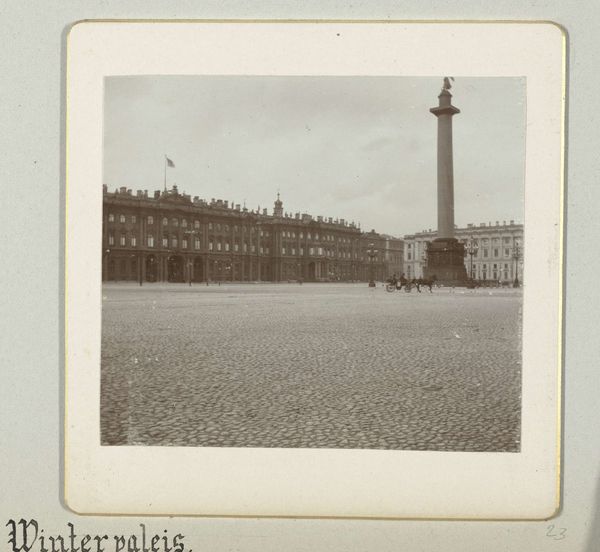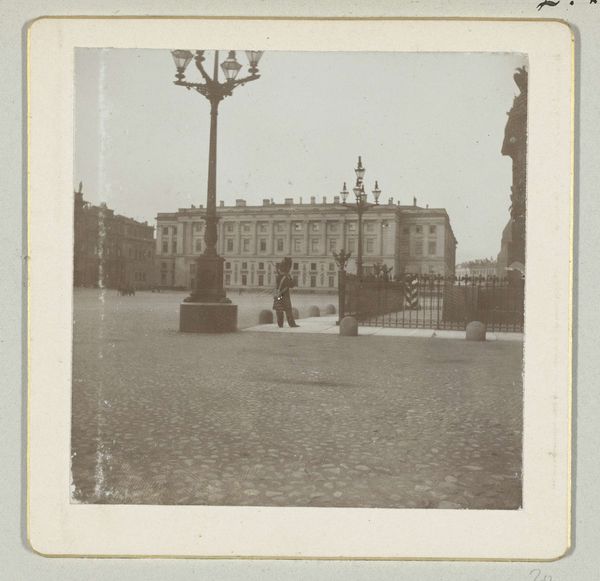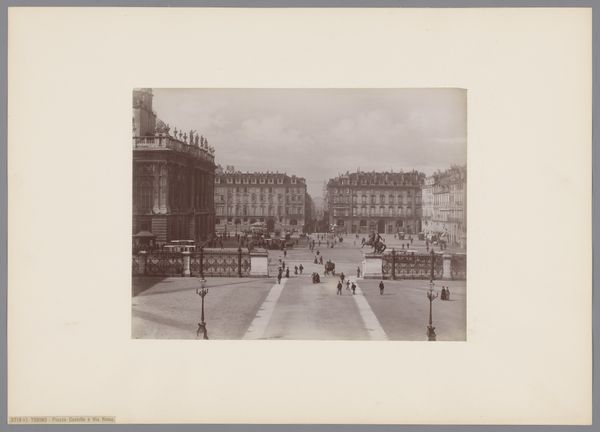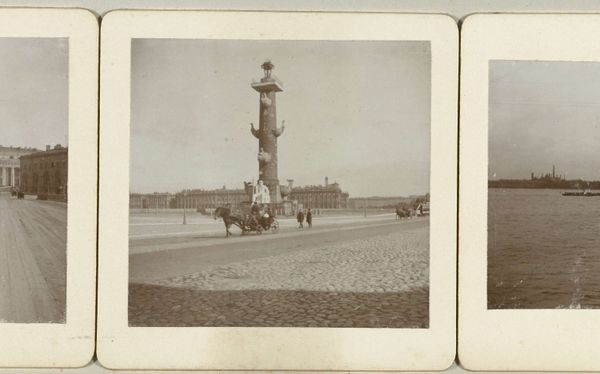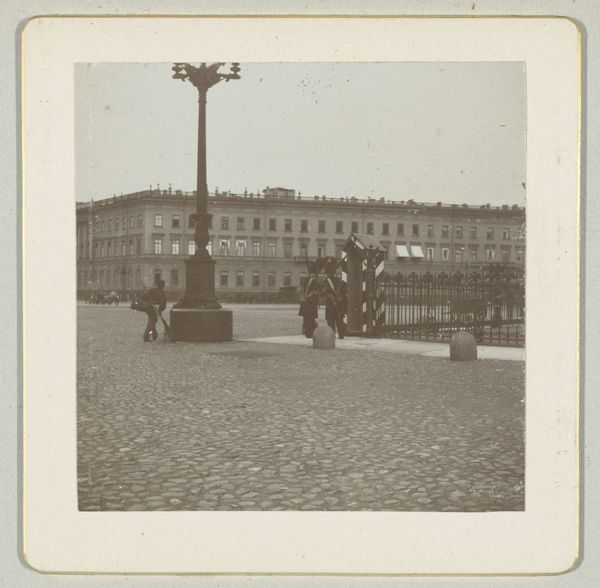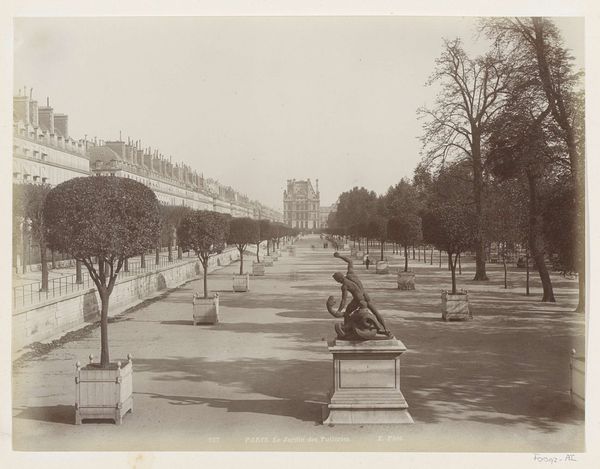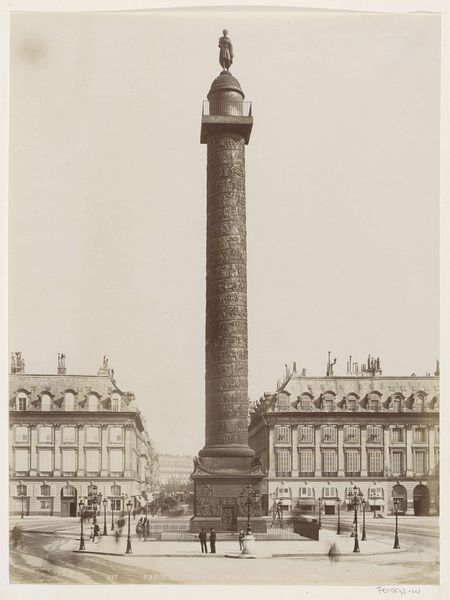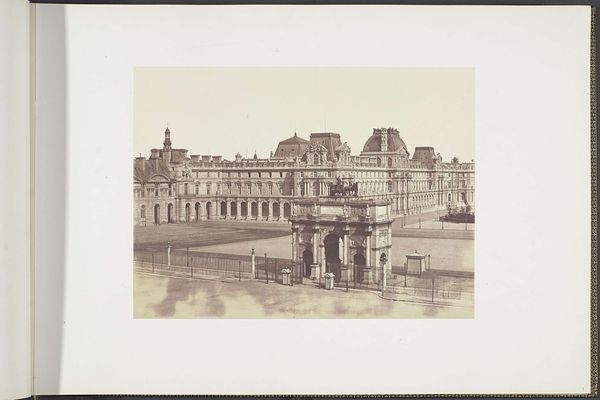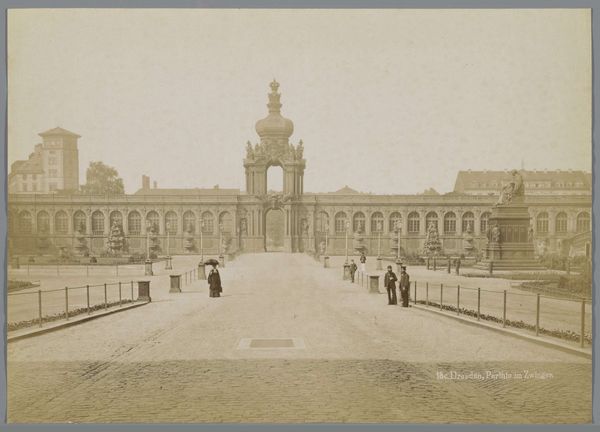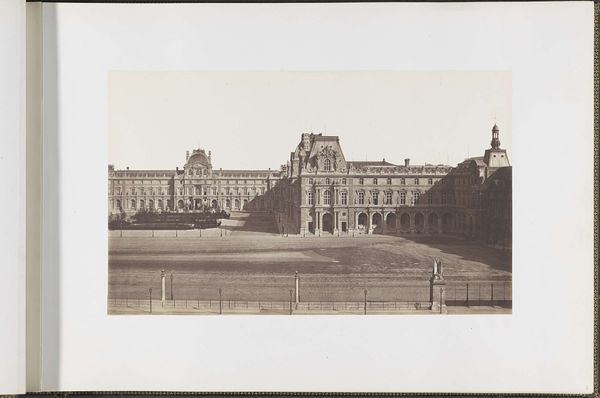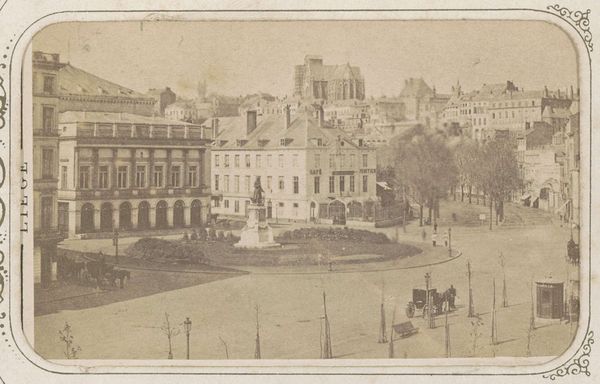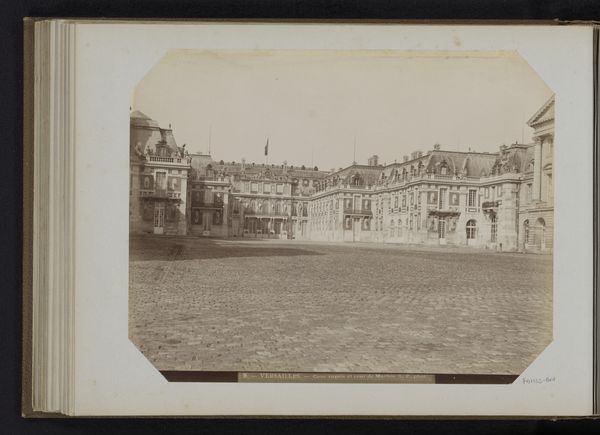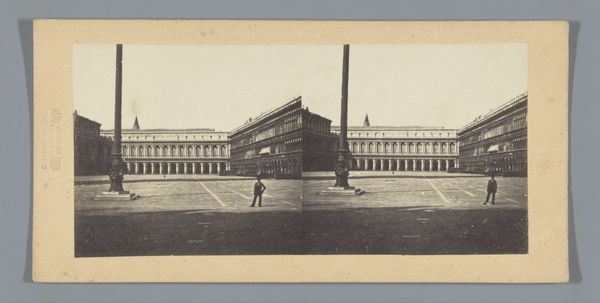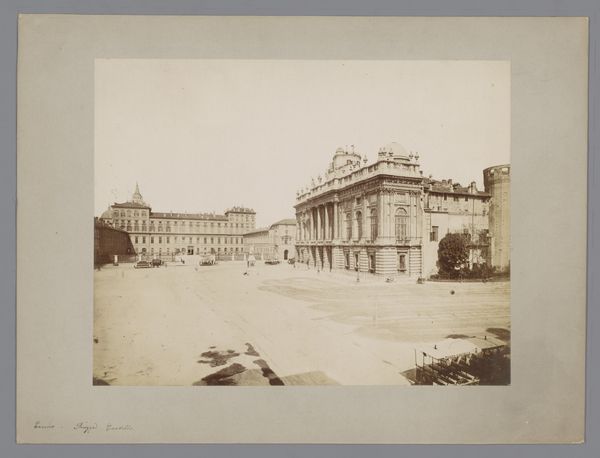
Dimensions: height 100 mm, width 100 mm, height 259 mm, width 365 mm
Copyright: Rijks Museum: Open Domain
Curator: Here we have "The Place in front of the Hermitage in St. Petersburg," a photograph from 1898 by Henry Pauw van Wieldrecht, now housed in the Rijksmuseum. The whole space feels expansive and the way the light touches the stones on the ground, you can almost feel the dampness. Editor: The mood is bleak. It gives a sense of alienation, a stark portrayal of urban existence in late 19th century Russia. It raises a lot of questions around labor, around how the city uses the materials and what does the grand Hermitage building say about its relationship with its people. Curator: Photography, even at this early stage, was deeply tied to material realities, and it's really intriguing to consider how the chemical processes involved in capturing this image reflect broader social and industrial shifts. Van Wieldrecht used available technologies to document a city square—but not just the buildings themselves. Look at the placement of people, what were their role in this space? Editor: And also think about how it captured the city, how class and status would have been reinforced through urban design. What kinds of power structures can we assume existed with these structures, these columns? Photography then becomes an objective act, of showing both what is present, and what has been obscured in official histories. Who had access to photograph? Curator: True, but in this image, though, it's interesting how it captures that sense of urban planning and the development of the city itself. Consider the scale of labor involved in constructing the buildings in this photo versus what the image shows now, in front of the Hermitage. The stones, the brickwork. Editor: The space also hints at the tension of monumental architecture. Structures like this aimed for immortality, creating an image for the ruling elite that attempts to erase resistance, that is so often met by public works. This really isn't just about bricks, glass, and stone! Curator: Yes, but there's the physical arrangement of materials –the stark contrast between the meticulous architecture in the background and the rather common cobblestones in the square and the ways the image depicts what the workers physically interact with the landscape that's just gorgeous and underplayed. Editor: Okay, yes, underplayed for sure, that resonates. Looking again at this stark space—how that open area could have also been constructed by demolishing former sites that did not cater to such monumental building works—now, *that’s* history as material erasure. Curator: It leaves a haunting imprint about power, access and of labor which makes us consider more deeply both photography’s artistic creation and the realities around the Hermitage at that point in time.
Comments
No comments
Be the first to comment and join the conversation on the ultimate creative platform.
